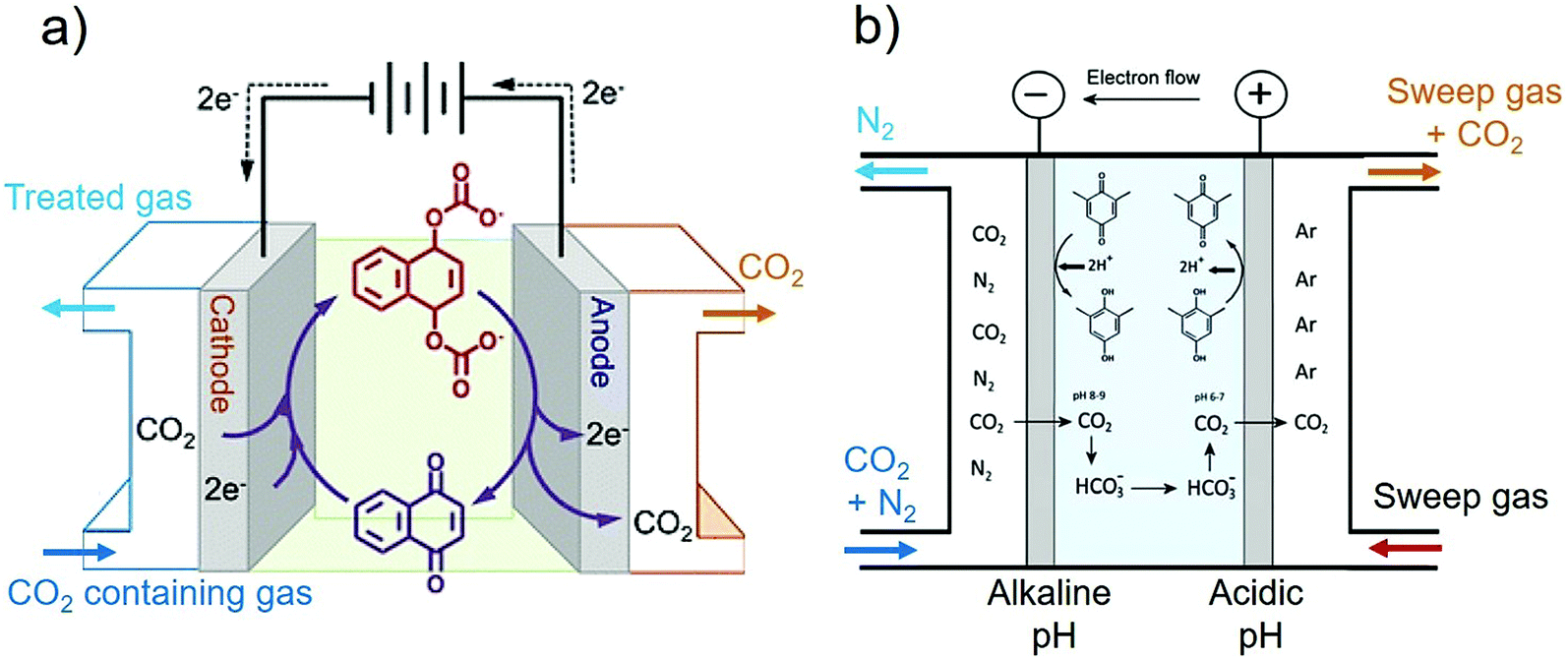Ross Phil De Luna Yifan Li Cao-Thang Dinh Dohyung Kim Peidong Yang Edward H. Electrochemical reduction of carbon dioxide is a viable alternative for reducing fossil fuel consumption and reducing atmospheric CO 2 levels.

Large Scale Electrochemical Co2 Conversions Dioxide Materials
Designing Materials for Electrochemical Carbon Dioxide Recycling.
. Designing materials for electrochemical carbon dioxide r ecycling Michael B. Designing Materials For Electrochemical Carbon Dioxide Recycling Nature Catalysis Alongside the CO 2 activation and reduction process the reduction of bound. Designing Materials for Electrochemical Carbon Dioxide Recycling A Review article by Mike Ross et al titled Designing Materials for Electrochemical Carbon Dioxide Recycling is published in Nature Catalysis.
Recycling is published in Nature Catalysis. ThecathodeistheelectrocatalystthatimplementstheCO 2 reduc-tionreactionCO 2 RRTheanodeprovidesasiteforoxidation. 7 CO2 utilization in catalytic systems9899123124.
Integrating catalytic design with mechanistic understanding yields scientific insights and progresses the technology towards. The catalysts must be able to convert CO 2 to other carbon-based products with high activity and selectivity to valuable chemicals. Department of Energy under Contract No.
By the Director Office of Science Office of Basic Energy Sciences Chemical Sciences Geosciences Biosciences Division of the US. - Designing materials for electrochemical carbon dioxide recycling Fig. Designing materials for electrochemical carbon dioxide recycling.
A Review article by Mike Ross et al titled Designing Materials for Electrochemical Carbon Dioxide Recycling is published in Nature. Designing Materials For Electrochemical Carbon Dioxide Recycling Peidong Yang Group Electrochemical reduction of carbon dioxide CO 2 RR to valuable fuels and chemicals utilizing renewable energy is a promising approach to reduce excessive CO 2 emission and achieve carbon recycling The reduced products of CO 2 mainly include CO 45 formate 67. None have considered the possibility that oxygen in the product might arise from water rather than from CO.
Electrochemical carbon dioxide recycling provides an attractive approach to synthesizing fuels and chemical feedstocks using renewable energy. View 0 peer reviews of Designing materials for electrochemical carbon dioxide recycling on Publons Download Web of Science My Research Assistant. Bring the power of the Web of Science to your mobile device wherever inspiration strikes.
Designing materials for electrochemical carbon dioxide recycling Competition with dihydrogen evolution. This work was supported by the CIFAR Bio-Inspired Solar Energy program. The formation of C 1 products such as formate or carbon monoxide has exhibited a great selectivity of over 90 while the multi-carbon products with greater commercial values have not.
Electrochemical carbon dioxide recycling provides an attractive approach to synthesizing fuels and chemical feedstocks using renewable energy. Electrochemical carbon dioxide recycling provides an attractive approach to synthesizing fuels and chemical feedstocks using renewable energy. Alongside the CO 2 activation and reduction process the reduction of bound.
And by the Director Office of Science Office of Basic Energy Sciences Materials. Department of Energy Bioenergy Technologies. Overview of attention for article published in Nature Catalysis July 2019.
On the path to deploying this technology basic and applied scientific hurdles remain. Eochemical carbon dioxide recycling ElectrochemicalCO 2-recyclingECRsystemsFig1aincludea cathodeananodeaCO 2-containingelectrolyteandamembrane. Designing materials for electrochemical carbon dioxide recycling.
Designing materials for electrochemical carbon dioxide recycling Competition with dihydrogen evolution. Recycling is published in Nature Catalysis. On the path to deploying this technology basic and applied scientific hurdles remain.
Designing materials for electrochemical carbon dioxide recycling. Interfacial interactions at the surface. Examples of how CO2 can be used as a reactant in gas phase thermochemical systems in solution phase homogeneous systems and in biological systems.
Integrating catalytic design with mechanistic understanding yields scientific insights and progresses the technology towards. Ross 12 Phil De Luna 23 Yifan Li 14 Cao-Thang Dinh 25 Dohyung Kim 6. Because electrocatalysis occurs at solidliquid and solidliquidgaseous.
Complex reaction mechanisms and the competing hydrogen. The construction of nanostructured materials for their application in electrochemical processes eg energy storage and conversion or sensing has undergone a spectacular development over the last decades as a consequence of their unique properties in comparison to those of their bulk counterparts eg large surface area and facilitated chargemass transport pathways. On the path to deploying this technology basic and applied scientific hurdles remain.
Although a wide variety of materials have been studied for electrochemical reduction of CO 2 the selective and efficient reduction of CO 2 is still not accomplished. Designing materials for electrochemical carbon dioxide recycling Published in. Integrating catalytic design with mechanistic understanding yields scientific insights and progresses the technology.
Nature Catalysis July 2019 Springer Science Business Media.
Designing Materials For Electrochemical Carbon Dioxide Recycling Peidong Yang Group

Electrochemical Carbon Dioxide Capture To Close The Carbon Cycle Energy Environmental Science Rsc Publishing Doi 10 1039 D0ee03382k

Recycling Carbon Dioxide With Copper Catalysts Science In The News

Safety Signs And Labels Easy Shopping With Guaranteed Compliance Fire Extinguisher Vinyl Labels Plastic Signs

Upcycling Co2 Into Energy Rich Long Chain Compounds Via Electrochemical And Metabolic Engineering Nature Catalysis

Solid State Electrochemical Cells Convert Carbon Dioxide Into Valuable Liquid Fuels Research Chemistry World
0 comments
Post a Comment